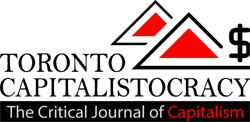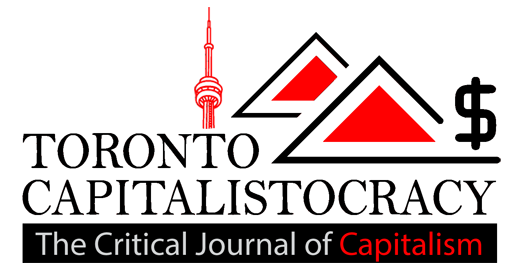Headline News
Why Stephen Poloz isn’t ready just yet to pivot on interest rates

Normally, we’d preview the Bank of Canada’s next policy decision closer to the actual date. But all the relevant data has been published, so why wait? Unless the central bank scraps its story, it will leave the benchmark rate at 1.25 per cent on May 30.
Canada’s dollar dropped half a cent against its U.S. counterpart on Friday, probably because new readings on inflation and retail sales suggest the economy is chugging along, not racing ahead at a pace that would alarm policy makers. The prices of financial assets linked to short-term interest rates put odds of an interest-rate increase next week at about 25 per cent.
The sudden wobble in the renegotiation of the North American Free Trade Agreement might also have influenced traders. Policy makers have characterized uncertainty about trade policy as the biggest headwind facing the economy because it’s a chill on investment. So the shift to a protracted negotiation, after politicians spent several weeks suggesting a deal was close, is a negative.
But trade never was going to play a major role in the May decision. The vibe around NAFTA was turning positive a month ago, and the Bank of Canada opted to leave the benchmark rate unchanged. Officials said they would stop worrying about trade only when they saw evidence that business investment was holding up. RBC Capital Markets said last week that its monitoring of company announcements suggests a modest increase in spending. Still, definitive data won’t be available until after May 30: Statistics Canada will release its tally of second-quarter gross domestic product the following day, and the central bank’s quarterly Business Outlook Survey is due on June 29.
That’s why the policy announcement scheduled for July 11 is the earliest the Bank of Canada could raise interest rates and remain consistent with what it’s said about how it would react to trade news, positive or otherwise. To move in May would require a noticeable change in other economic variables and that hasn’t happened.
To be sure, oil prices are about $15 a barrel higher than central bank’s current forecast, which is based on prices a month ago.
That will prompt some debate over the next 10 days as policy makers deliberate over where the economy is headed. Normally, a shift of that magnitude would represent a material change in Canada’s prospects. Yet there has been no discernible change in the value of the currency, the TSX or the outlook for economic growth, according to economists at Bank of Montreal. Higher crude prices mean the value of exports is rising, but those gains are being offset by doubts about whether the increase will last and the future competitiveness of Canada’s high-cost oil industry.
One indicator that would outweigh concerns about business investment is inflation. The Bank of Canada’s primary mission is to keep the consumer price index advancing at an annual rate of about 2 per cent. Statistics Canada reported the CPI increased 2.2 per cent in April from a year earlier, the third-consecutive month that inflation exceeded the central bank’s target. That’s noteworthy because annual price increases had brushed the target only three times in the previous three years.
The upward pressure on inflation could make the May decision a closer call than currency traders seem to think. The Bank of Canada cares more about three specially crafted inflation gauges than it does the headline number, which is often distorted by surges and plunges in energy and prices. Two of those three measures now are above 2 per cent, and the third is at 1.9 per cent, so for the first time since early 2012 all four of the key price indicators have been at target or higher. Sebastien Lavoie, a former staffer at the BoC who now is chief economist at Laurentian Bank Securities in Montreal, calculated that prices for 24 of the items in StatCan’s CPI basket were increasing at a rate faster than 3 per cent in the first quarter, compared with 22 that did so in 2017. The number of items that were cheaper declined to 30 from 34. The change suggests inflation is heating up, if only gradually.
“We still think it is preferable for [Bank of Canada] officials to remain on the sidelines at the May 30 monetary policy decision meeting,” Lavoie said in a note to his clients. “This being said, this decision is likely to be a close call given that two of the three core inflation measures are now above the 2% target.”
The two other factors that dominate the Bank of Canada’s narrative about the economy are household debt and Poloz’s contention that lower interest rates might actually help policymakers stay ahead of inflation.
Household debt is about 100 per cent of GDP, compared to about 70 per cent in 2005, according to the International Monetary Fund’s new Global Debt Database. All that debt probably means consumers are more sensitive to changes in interest rates than they were in the past. So the BoC is looking for evidence that credit growth is slowing, but not so fast that it crushes domestic demand. And as you might expect, higher interest rates appear to be restraining consumer demand. StatsCan said last week that retail sales jumped 0.6 per cent in March from the previous month, but only because of a surge in automobile purchases. Most other retail segments are essentially unchanged from January 2017.
Sluggish retail sales support Poloz’s argument that Canada’s economy isn’t as strong as its 5.8-per-cent jobless rate suggests. He sees elevated rates of long-term and youth unemployment as marks of the financial crisis and the oil-price collapse. Higher interest rates risk killing growth that could pull more of those people into the labour market and Poloz has been crystal clear that he intends to do what he can to encourage that to happen.
“In some models of the economy, that would become a permanent thing, a hysteresis thing,” Poloz said of the elevated number of marginalized workers, while talking to me and a couple of other journalists in Washington last month. “Well, if it can happen in one direction, there is no reason with enough time that it can’t be reversed because it’s just people combined with new investment, just building more economic building blocks.”
He added: “You’ve got to believe we’re going to get a fair bit of that. But again I can’t guess how much, but I think it’s a really important phase.”
It will take some strong evidence to push Poloz off that course and there hasn’t been enough since then to force a pivot. Bottom line: low for a bit longer.
Headline News
How Canadian churches are helping their communities cope with the wildfires

As wildfires burn across Canada, churches are finding ways to support their members and the broader community directly impacted by the crisis.
According to the Canadian Interagency Forest Fire Centre, as of June 13, there are 462 active fires across Canada – and 236 of them classified as out of control fires.
Whether it’s through phone calls or donations to community members, here’s how a few churches across Canada are handling active wildfires and the aftermath in their regions.
Westwood Hills, N.S.: St. Nicholas Anglican Church
In Nova Scotia, St. Nicholas Anglican Church and other churches in the area are collecting money for grocery cards to give to families impacted by the Tantallon wildfire.
Right outside of Halifax, N.S., the Tantallon wildfire destroyed 151 homes. More than 16,000 people evacuated the area due to the fire.
The fire is now considered contained, but Tanya Moxley, the treasurer at St. Nicholas is organizing efforts to get grocery gift cards into the hands of impacted families.
As of June 12, four churches in the area – St. Nicholas, Parish of French Village, St Margaret of Scotland and St John the Evangelist – raised nearly $3,500. The money will be split for families’ groceries between five schools in the area impacted by the wildfire.
Moxley said she felt driven to raise this money after she heard the principal of her child’s school was using his own money to buy groceries for impacted families in their area.
“[For] most of those people who were evacuated, the power was off in their subdivision for three, four or five days,” she said. “Even though they went home and their house was still standing, the power was off and they lost all their groceries.”
Moxley said many people in the area are still “reeling” from the fires. She said the church has an important role to help community members during this time.
“We’re called to feed the hungry and clothe the naked and house the homeless and all that stuff, right? So this is it. This is like where the rubber hits the road.”

Headline News
Is it ever OK to steal from a grocery store?

Mythologized in the legend of Robin Hood and lyricized in Les Misérables, it’s a debate as old as time: is it ever permissible to steal food? And if so, under what conditions? Now, amid Canada’s affordability crisis, the dilemma has extended beyond theatrical debate and into grocery stores.
Although the idea that theft is wrong is both a legally enshrined and socially accepted norm, the price of groceries can also feel criminally high to some — industry data shows that grocery stores can lose between $2,000 and $5,000 a week on average from theft. According to Statistics Canada, most grocery item price increases surged by double digits between 2021 and 2022. To no one’s surprise, grocery store theft is reportedly on the rise as a result. And if recent coverage of the issue rings true, some Canadians don’t feel bad about shoplifting. But should they?
Kieran Oberman, an associate professor of philosophy at the London School of Economics and Political Science in the United Kingdom, coined the term “re-distributive theft” in his 2012 paper “Is Theft Wrong?” In simplest terms, redistributive theft is based on the idea that people with too little could ethically take from those who have too much.
“Everybody, when they think about it, accepts that theft is sometimes permissible if you make the case extreme enough,” Oberman tells me over Zoom. “The question is, when exactly is it permissible?”
Almost no one, Oberman argues, believes the current distribution of wealth across the world is just. We have an inkling that theft is bad, but that inequality is too. As more and more Canadians feel the pinch of inflation, grocery store heirs accumulate riches — Loblaw chair and president Galen Weston, for instance, received a 55 percent boost in compensation in 2022, taking in around $8.4 million for the year. Should someone struggling with rising prices feel guilty when they, say, “forget” to scan a bundle of zucchini?

Headline News
The homeless refugee crisis in Toronto illustrates Canada’s broken promises

UPDATE 07/18/2023: A coalition of groups arranged a bus to relocate refugees to temporarily stay at a North York church on Monday evening, according to CBC, CP24 and Toronto Star reports.
Canadians live in a time of threadbare morality. Nowhere is this more obvious than in Toronto’s entertainment district, where partygoers delight in spending disposable income while skirting refugees sleeping on sidewalks. The growing pile of luggage at the downtown corner of Peter and Richmond streets resembles the lost baggage section at Pearson airport but is the broken-hearted terminus at the centre of a cruel city.
At the crux of a refugee funding war between the municipal and federal governments are those who have fled persecution for the promise of Canada’s protection. Until June 1, asylum seekers used to arrive at the airport and be sent to Toronto’s Streets to Homes Referral Assessment Centre at 129 Peter St. in search of shelter beds. Now, Toronto’s overcrowded shelter system is closed to these newcomers, so they sleep on the street.
New mayor Olivia Chow pushed the federal government Wednesday for at least $160 million to cope with the surge of refugees in the shelter system. She rightly highlights that refugees are a federal responsibility. In response, the department of Immigration, Refugees, and Citizenship Canada points to hundreds of millions in dollars already allocated to cities across Canada through the Interim Housing Assistance Program, while Ontario says it has given nearly $100 million to organizations that support refugees. But these efforts are simply not enough to deliver on Canada’s benevolent promise to the world’s most vulnerable.
The lack of federal generosity and finger-pointing by the city has orchestrated a moral crisis. It’s reminiscent of the crisis south of the border, where Texas governor Greg Abbott keeps bussing migrants to cities located in northern Democratic states. Without the necessary resources, information, and sometimes the language skills needed to navigate the bureaucratic mazes, those who fled turbulent homelands for Canada have become political pawns.
But Torontonians haven’t always been this callous.
In Ireland Park, at Lake Ontario’s edge, five statues of gaunt and grateful refugees gaze at their new home: Toronto circa 1847. These statues honour a time when Toronto, with a population of only 20,000 people, welcomed 38,500 famine-stricken migrants from Ireland. It paralleled the “Come From Away” event of 9/11 in Gander, N.L., where the population doubled overnight, and the people discovered there was indeed more than enough for all. It was a time when the city lived up to its moniker as “Toronto, The Good.”
Now, as a wealthy city of three million people, the city’s residents are tasked with supporting far fewer newcomers. Can we not recognize the absurdity in claiming scarcity?
















